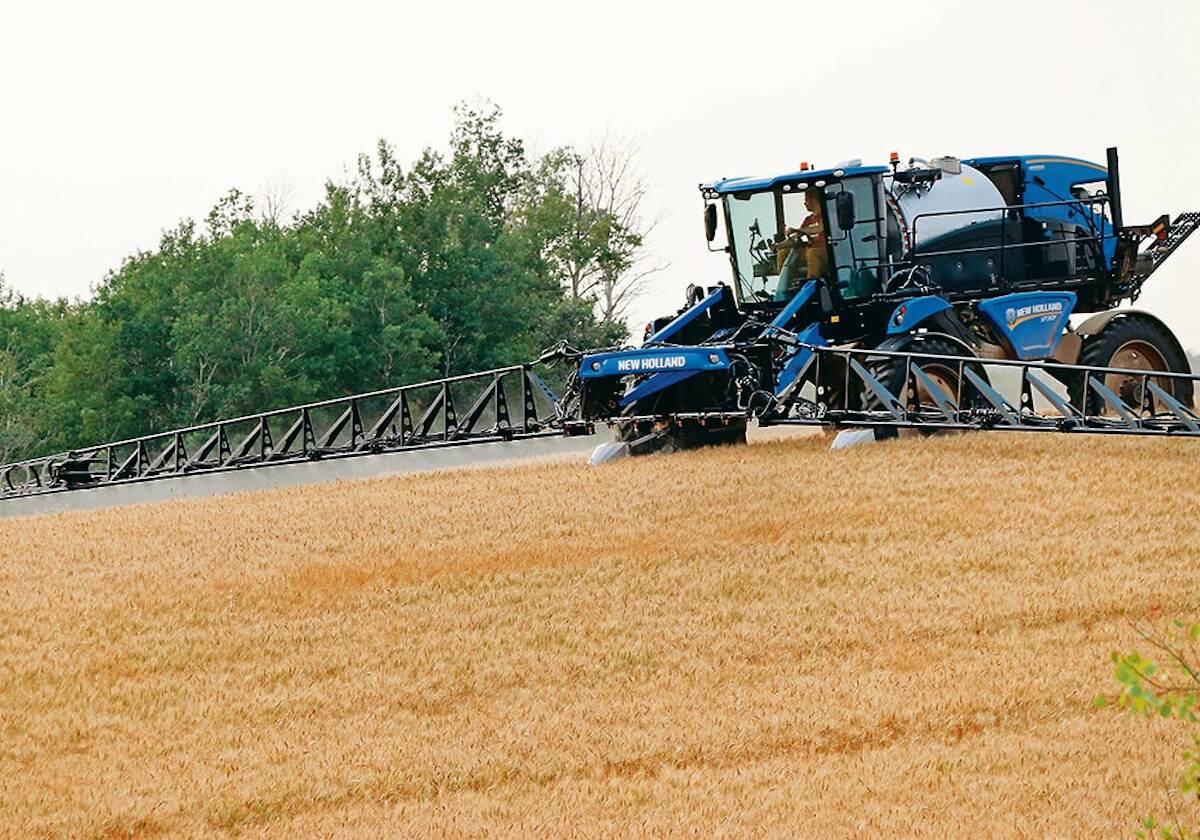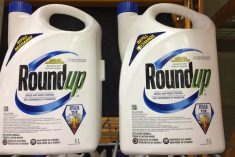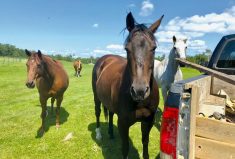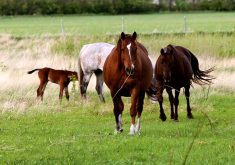As an animal nutritionist, I’m concerned about the health and welfare of farm animals. Animals that are stressed due to inadequate housing conditions or nutrition are less sustainable.
That’s why I read the article “Herbicides and Horses” with great interest. In the article, the author speculates that glyphosate’s chelation and antimicrobial properties can have negative consequences in horses, and maybe even humans. I thought it was important to continue the conversation by offering a different perspective.
Read Also

Farming still has digital walls to scale
Canadian farms still face the same obstacles to adopting digital agriculture technology, despite the years industry and policy makers have had to break them down.
Chelation is a property where one compound binds to another. In animal nutrition, this is commonly observed when a compound in some grains, phytate, binds and prevents absorption of minerals, such as calcium. Even though glyphosate was not patented as a chelator as the article claims, it can chelate some minerals. But glyphosate is a weak chelator compared to many common compounds such as most amino acids, which are a normal part of a horse’s diet. The amino acids in a horse’s gut are more likely to bind dietary minerals than glyphosate. Of course, we should not stop feeding horses protein due to the chemical nature of amino acids being chelators.
It’s true that in plants, glyphosate affects the enzyme EPSPS that is in the shikimate pathway for making aromatic amino acids. The notion that glyphosate affects microbes in the guts of horses requires an understanding of real-world exposure. For example, there are many chemicals, such as salt and sugar that are toxic to bacteria, yet they have been used for centuries to preserve and improve taste of foods. We still use salt and sugar today because used in appropriate amounts they don’t pose a risk to human health.
The European Food Safety Authority evaluated the impact of glyphosate on livestock, including horses. It concluded that if everything a horse ate had the maximum possible permitted glyphosate residues (all feedstuffs from crops containing the maximum permitted residue amounts of glyphosate) there would be no impact on livestock health.
Glyphosate can affect certain microbes under specific experimental conditions, but these conditions do not mimic real life.
For example, if a single strain of a gut organism is inoculated into a test tube that contains the minimal quantities of nutrients to sustain growth, these bacteria do grow. But, eventually, they will use up nutrients in the media and die off in the waste products that they generate.
These conditions have been used in some studies of glyphosate and do not replicate real-world exposure. In live animals, gut microbes are at the right temperature at a regulated acidity with no oxygen. Large quantities of nutrients are continuously supplied, and waste products are washed downstream. There is a mixed population of strains that exquisitely orchestrate how nutrients are used.
To really understand if glyphosate affects gut microbes in animals or humans, studies need to be conducted in a manner that most closely replicates real-world conditions. A researcher in Germany used an artificial system that more closely mimics the conditions in the rumen of cattle and found that glyphosate did not adversely affect rumen microbes. In another study, a researcher added formulated Roundup directly into the rumen of sheep at high concentrations and found no effects. Results of these more realistic studies are also consistent with other data for livestock.
The statement that glyphosate use (not application rates) in agriculture has increased is true but in spite of this, the sum of all exposures from all uses are still very low compared to the amounts that have been shown to be used safely. One study looked at publicly available data from a billion farm animals and saw no apparent change in productivity as a result of introducing GM crops, including glyphosate-tolerant ones in the U.S. It’s well known that farm animals such as chickens, swine, beef and dairy cattle need to be healthy to lay eggs, grow, make milk and reproduce at optimum levels to be more productive and more sustainable.
Glyphosate-based herbicides are among the most widely used crop protection products in modern agriculture due to their effectiveness, extensive economic and environmental benefits, and strong safety profile.
For more detailed information of what I’ve described in this article, please see a recent review we published in the Journal of Animal Science or visit the glyphosate section of Bayer’s transparency site.
John L. Vicini, PhD is senior research fellow at Bayer Crop Science.


















